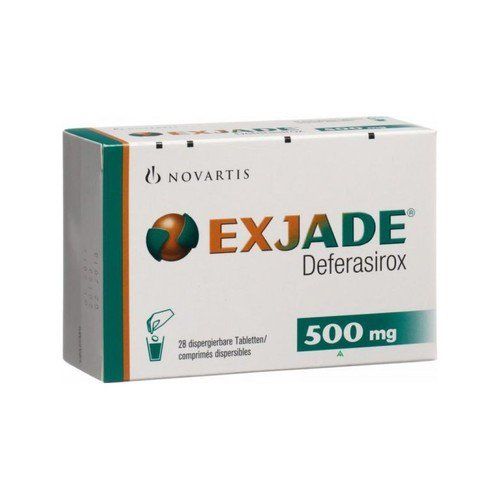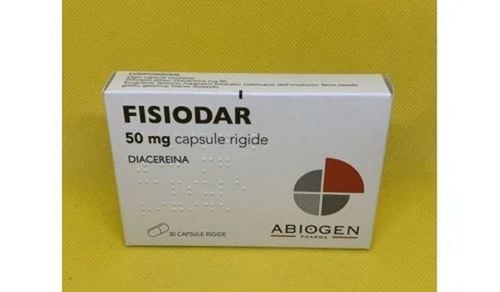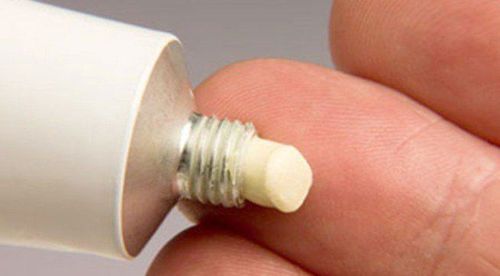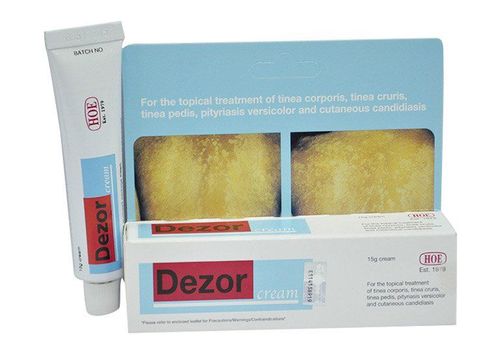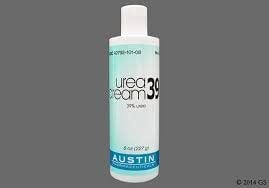This is an automatically translated article.
Cortef is a prescription drug, used in the treatment of symptoms of many different diseases. To ensure the effectiveness of using Cortef, patients also need to follow the instructions of a specialist.
1. What is the use of Cortef?
1.1. What is Cortef? Cortef belongs to the group of Hormonal and Hormonal drugs, with registration number VN-9358-05, manufactured by Pharmacia N.V./S.A - Belgium.
Cortef drug includes the following ingredients:
Main active ingredient: Hydrocortisone 5, 10 or 20mg. Excipients: Mineral oil, lactose, calcium stearate, sorbic acid, corn starch, sucrose. The drug is prepared in the form of tablets with a strength of 5mg in a bottle of 50 tablets, a content of 10mg in a bottle of 100 tablets or a content of 20mg in a bottle of 100 tablets.
Cortef is recommended for use in adults and children but requires close medical supervision.
1.2. What does Cortef do? Cortef is one of the few drugs that works with many diseases and many organs in the body.
In endocrinology:
Subacute thyroiditis; Congenital adrenal hyperplasia; Hypercalcemia in malignancies; Adrenal insufficiency (hydrocortisone is the drug of choice for alternative therapy): primary (Addison's disease; often in combination with mineralocorticoid preparations); secondary (use more often without mineralocorticoid supplementation). In dermatology:
Mycosis fungoides (Alibert's disease); Exfoliative dermatitis; Severe psoriasis; Severe rosacea; Severe seborrheic dermatitis; Dermatitis herpetiformis; Balloons. In hematology:
Autoimmune hemolytic anemia (acquired); Secondary thrombocytopenia in adults; Anemia of red blood cells (erythroblastopenia); Thrombocytopenia purpura of unknown cause in adults; Erythroid (from congenital) hypoplastic anemia. In allergy: Control disabling or severe allergic conditions such as:
Atopic dermatitis; Contact dermatitis ; Serum disease; Seasonal or perennial allergic rhinitis; Asthma ; Hypersensitivity reactions to the drug. In the treatment of lung diseases:
Symptomatic Sarcoidosis; Berylliosis; Loeffler syndrome, which cannot be treated with other drugs; Advanced pulmonary TB (in combination with appropriate anti-tuberculosis chemotherapy); Respiratory pneumonia. In ophthalmology : Acute, chronic and severe allergic and inflammatory diseases involving the eye and its appendages:
Irit and iridocyclitis; Complications of the eye in shingles; Chorioretinitis; Corneal allergic ulcer; Keratitis; Uveitis and possibly meningitis; Allergic conjunctivitis; Optic neuritis. In cancer treatment: Combined palliative treatment in the following cases:
Acute leukemia in children; Adult lymphoma and leukemia. In neurology:
Acute phase of multiple sclerosis. Kidney:
Stimulates diuresis or relieves proteinuria due to non-uremic nephrotic syndrome, which can be idiopathic or develop due to systemic lupus erythematosus. In rheumatic diseases:
As a short-term adjunct therapy (during acute or severe disease) in the following cases:
Post-traumatic osteoarthritis; Acute gouty arthritis; Sinusitis in osteoarthritis; Acute non-specific tenosynovitis; Epicondylitis; Rheumatoid arthritis, incl. adolescents (in some cases, it may be necessary to conduct maintenance therapy in small doses); Acute and subacute periarticular bursitis; Psoriatic arthritis ; Ankylosing spondylitis. As a maintenance or exacerbation treatment, Cortef may be prescribed in the following cases:
Polymyositis; Systemic lupus erythematosus ; Acute rheumatic heart disease. Other:
Tuberculous meningitis with a subarachnoid mass or threat of mass (need in combination with appropriate anti-tuberculosis chemotherapy). 1.3. Absolute contraindications:
Systemic fungal infections; The patient is allergic to the main active ingredient Hydrocortisone or any of the excipients of the drug Relative:
Appendicitis; Fresh intestinal Anastomosis; Active or latent peptic ulcer; CKD ; Myasthenia gravis; Osteoporosis ; Hypertension; Herpes infection of the eye; Latent TB and positive TB have been confirmed; Confirmed or suspected strongyloidiasis; Non-specific ulcerative colitis; Hypothyroidism ; Cirrhosis.
2. Usage of the drug Cortef
2.1. How to take Cortef The drug Cortef is taken orally. Swallow the tablet whole with water, do not crush, damage the drug or mix Cortef with any other mixture to drink. Strictly follow the dose of Cortef prescribed by the doctor, do not arbitrarily add or reduce the prescribed oral dose without the approval of the treating doctor. 2.2. Dosage of Cortef Depending on the clinical symptoms of the patient and the severity of the disease, the starting dose may vary from 20 to 240 mg.
If necessary, the dose of Cortef can be changed until the desired effect is achieved. Thereafter, the maintenance dose is established gradually (over a certain period of time), but under medical supervision, the therapeutic dose is reduced until the lowest dose is reached that can maintain the desired effect. would like. In the event of increased individual sensitivity to the drug and when the clinical manifestations of the disease have subsided, the dose should be adjusted. After long-term use of Cortef, the dose can be gradually reduced before discontinuing treatment. Or if, after a sufficiently long period of treatment, the patient's clinical effect cannot be achieved, discontinue Cortef and substitute another therapy. For the first week of treatment for multiple sclerosis, take 200mg of Cortef daily. For the next month take 80mg per day. It should be noted that 20mg hydrocortisone ~ with 5mg prednisone. Handling missed dose:
Take the dose of Cortef as soon as you remember, if it's too long and it's close to the time for the next dose, continue taking it as scheduled and skip the missed dose.
3. Notes when using Cortef
Hydrocortisone may mask some signs of infection or new infections may appear during use. Infection with any pathogen including bacterial, viral, fungal, protozoan or helminthic infections, anywhere in the body, may be associated with corticosteroid use alone or in combination with other immunosuppressants. Affects humoral immunity, cellular immunity or neutrophil function. These infections can be mild, but can be severe and sometimes fatal. With increasing doses of corticosteroids, the incidence of infectious complications also increased proportionally. May lead to decreased resistance and inability to localize infection when corticosteroids are used. Prolonged use of Cortef may cause posterior subcapsular cataracts, increased intraocular pressure with potential damage to the optic nerve, and may enhance the development of secondary viral or fungal eye infections. Use with caution in patients with simple herpetic eye infections, because corneal perforation is possible. To control the state after the end of treatment, prescribe the minimum effective dose of the drug and reduce the dose gradually. Like all glucocorticosteroids, Cortef increases calcium excretion. When using drugs with immunosuppressive effects, live vaccines, attenuated vaccines or inactivated vaccines cannot be given. But when hydrocortisone is used at a dose that does not have an immunosuppressive effect, if indicated, vaccination can still be carried out. Treatment of active tuberculosis, used only when clearly needed and in combination with appropriate anti-tuberculosis chemotherapy. If the patient has latent TB or the TB test is positive when taking drugs that can trigger the disease. Therefore, with long-term Cortef therapy, these patients require TB prophylaxis. Patients receiving oral Cortef in immunosuppressive doses should avoid exposure to measles and chickenpox. Treatment for strongyloidiasis and suspected strongyloidiasis is done with special care. Cortef-induced immunosuppression in these patients leads to infection and facilitates extensive larval migration, often accompanied by enteritis and negative sepsis, which can be fatal. Patients with nonspecific ulcerative colitis should be monitored continuously during treatment, because of the risk of perforation, abscess, or purulent infection. With the long-term treatment of children, including infants, you need to carefully monitor their growth and development.
4. Side effects of the drug Cortef
At therapeutic doses, Cortef is well tolerated. However, during the use of Cortef, patients may still experience side effects such as:
Cardiovascular system: in some cases - arterial hypertension, congestive heart failure; Water and electrolyte balance: loss of potassium, fluid and sodium retention in the body, hypokalemic alkalosis; Musculoskeletal system: Osteoporosis, loss of muscle mass, tendon rupture (especially Achilles tendon), steroid myopathy, muscle weakness, vertebral compression fracture, pathological fracture of the tubular bone, aseptic necrosis of man Humor bone head and femur; Central nervous system: Dizziness, headache, convulsions, increased intracranial pressure , accompanied by the development of optic disc edema (cerebral pseudotumor, which usually develops after drug discontinuation); Digestive system: Flatulence, ulcerative esophagitis, pancreatitis, peptic ulcer with possible perforation and bleeding. In some cases - an increase in the activity of alanine aminotransferase, aspartate aminotransferase, alkaline phosphatase (usually insignificant, not associated with any clinical syndrome and reversible after stopping treatment); Endocrine system: Cushing's syndrome, menstrual disorders, pituitary and adrenal secondary reactions of various origins, hyperinsulinemia or hypoglycemic agents, manifestations of latent diabetes mellitus and delayed development development in children; Ophthalmology: Glaucoma, exophthalmos and posterior submucosal cataracts; Dermatological reactions: Increased sweating, petechiae, decreased skin strength, slow wound healing, ecchymosis and facial redness. If you experience these symptoms, the patient should stop using Cortef and notify the doctor for appropriate treatment.
5. Cortef drug interactions
Drugs that induce microsomal liver enzymes (Rifampicin, Phenytoin and Phenobarbital), may increase the clearance of hydrocortisone, Therefore, its dose should be increased. Ketoconazole and Oleandomycin can inhibit the metabolism of the active substance hydrocortisone. Therefore it is necessary to reduce its dose. Cortef may increase the clearance of acetylsalicylic acid in case of long-term use of high doses. Caution, when co-administering two drugs for leukopenia. Cortef affects the effectiveness of oral anticoagulants: There have been reports of a decrease and increase in their effect. Therefore, it is necessary to continuously monitor the coagulation parameters. Cortef may increase the clearance of chronic high-dose Aspirin. This may lead to a decrease in serum salicylate concentrations or an increased risk of salicylate toxicity upon discontinuation of Cortef. Aspirin should be used with caution with corticosteroids in patients with hypoprothrombinemia.
6. How to store Cortef
Cortef storage time is 36 months from the date of manufacture Cortef's storage temperature is from 20 to 25 degrees Celsius. Store the drug in the original packaging, away from direct light, away from moisture. Keep Cortef out of reach of children. Above is all information about the drug Cortef, patients need to carefully read the instructions for use, consult a doctor / pharmacist before using. Note, Cortef is a prescription drug, you need to use it as prescribed by your doctor, absolutely do not self-treat at home.




